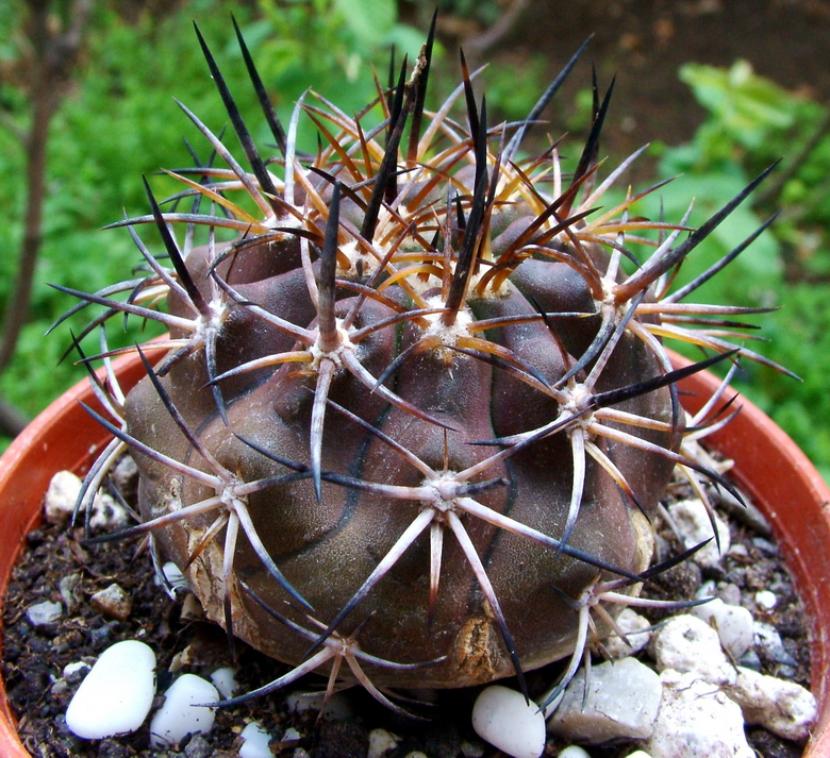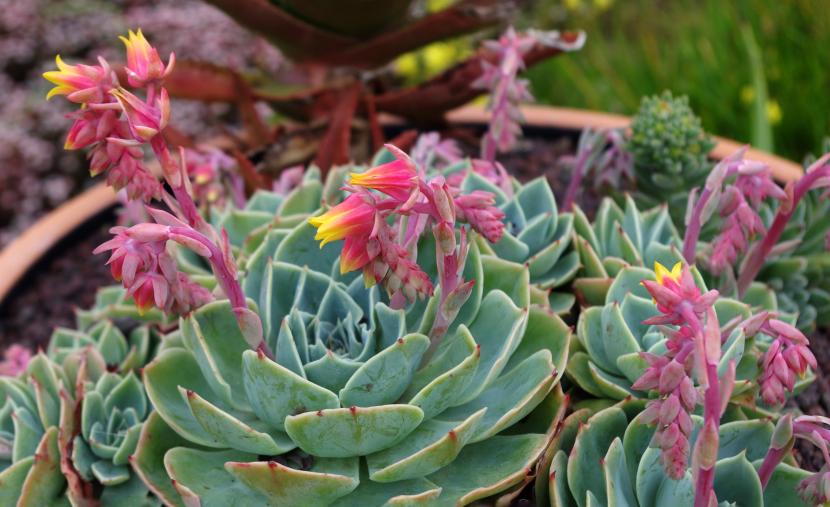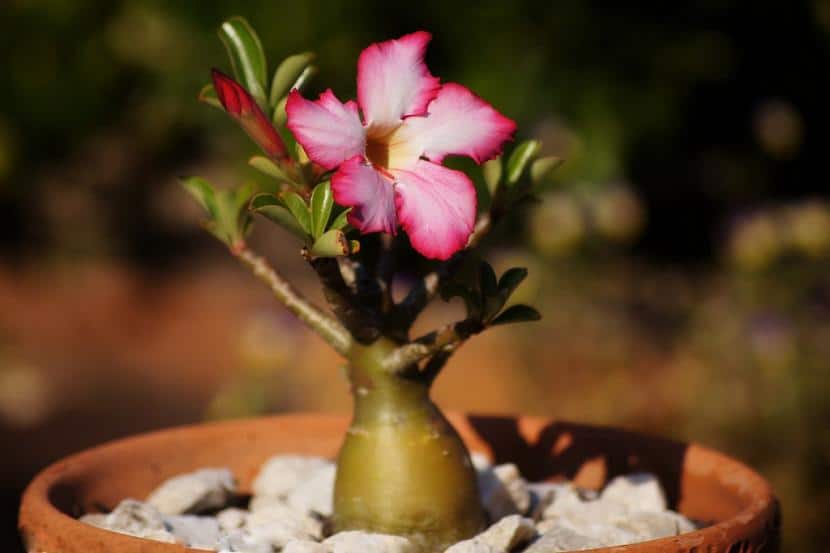
Sedum x Echeveria
There is still much confusion about what is a cactus, what is a succulent plant, what is a caudex plant and what is a succulent. Although they all have something in common, and it is the ability to absorb water that will keep them alive in a place where rainfall is very scarce, in reality they are very different. Or maybe not so much.
Time to know what are the main characteristics of each one. So every time we see them it will be easier for us to identify them.
What are cacti?

Copiapoa echinoides cv hard
Let's start with them, the cacti. Plants that have thorns ... almost always. Yes, indeed: there are species that do not have or that are so small that they are hardly seen, such as the Astrophytum asterias or Echinopsis subdenudata. However, the vast majority protect themselves thanks to them, which is why it is said that cacti are thorny plants to differentiate them from others.
But so that there is no confusion, other than the thorns, we will have to look at something else: the areolas. What are they? They are bumps found on the ribs of these plants. From them arise both the main spine (the longest) and the secondary ones, as well as the flowers.
They can take two main forms: globular and columnar. Although you should know that there are also hanging and / or epiphytic cacti, and creeping ones.
What are succulent plants?

echeveria secunda
In its strictest sense, we could say that are those plants that belong to the Crassulaceae family, that is, those species that are part of these three botanical tribes:
- Crassuloideae: Crassula and Tillaea.
- Kalanchoideae: Kalanchoe and Tylecodon.
- sempervivoideae: Dudleya, Echeveria, Rhodiola, Sedum and Sempervivum.
However, we also include those plants that, without being from these tribes, also have the characteristics of succulents, which are to have fleshy stems and / or leaves and flowers that sprout from a flower stalk and not of the same body of the plant.
There are some that have something similar to thorns, such as euphorbia enopla, but these do not have areolas. In addition, they can take many forms: shrub, small tree, hanging, creeping, ground cover, ...
What are caudex plants?

Adenium obesum
When we speak of plants with caudex or caudiciform plants, we refer to those plants, most of which are arborescent, who have made their own water store out of their trunk. Thus, it is common for them to take the shape of a bottle.
The best known are the Adenium obesum (Desert rose) and the Adansonia digitata (Baobab).
What are succulents?

Astrophytum asterias
The term "succulent" encompasses everything: cacti and succulents. They are all those plants that absorb water through their pores and store it somewhere in their body to be able to get ahead even in the worst moments.
If you have doubts, do not leave them in the inkwell 🙂.